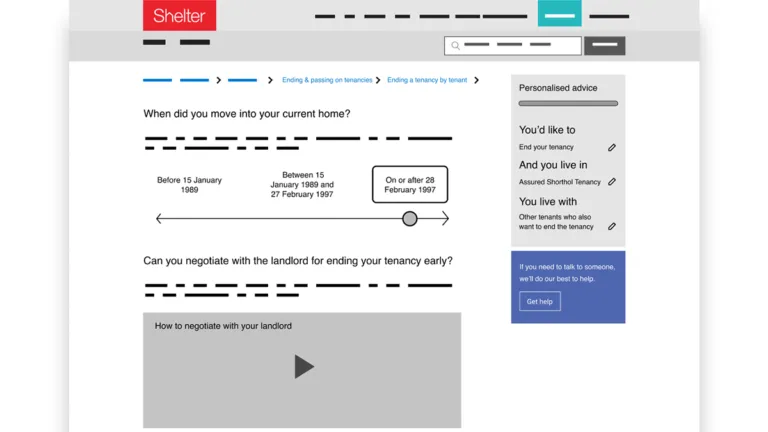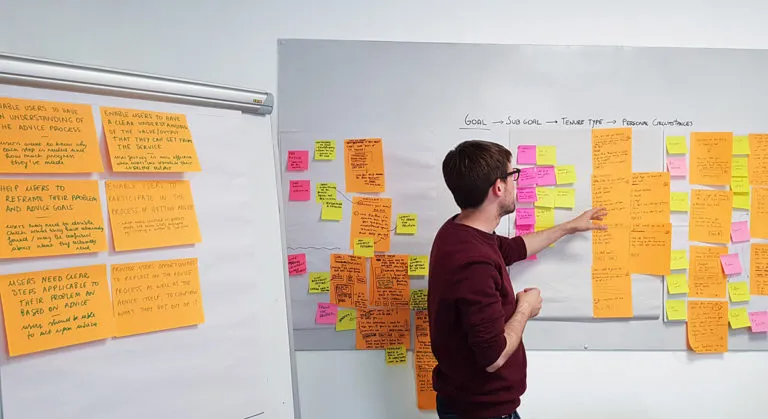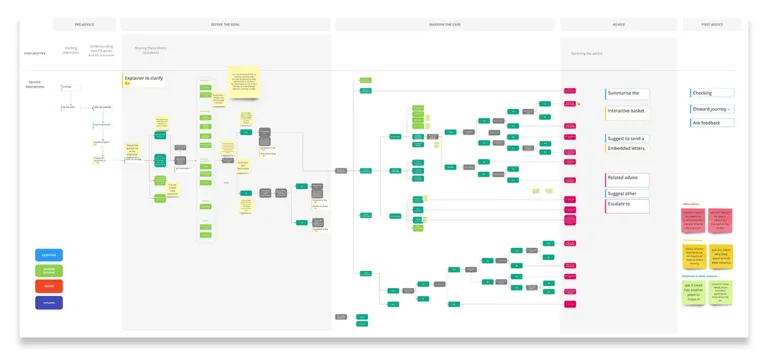Humanising digital to give personalised advice to people struggling with housing
Published: by Matteo Remondini

Over the last three years, we have been busy working on various areas to improve our services. The number of people that need our help keeps dramatically increasing, so we streamlined the digital experience for people that want to access our services – and redefined what counted as an emergency, so we can answer more urgent calls.
Now, we want to expand our digital offer so that we can help more of the people whose situation is not as urgent, not too complex, and who are confident using devices like laptops or smartphones.
We aim to develop a scalable solution that helps people easily find information that applies to their specific circumstances. It will make them feel confident that they understand this information and help them resolve their problem.
Doing our homework
To gain a deeper understanding of what gaining personalised advice could mean, our team did some research. This involved:
- walking with our stakeholders around Sheffield town centre, to experience how citizen-facing services would help us if we were users in need of advice. For example, we pretended to be foreign students looking for tourist information – and another group approached a walk-in clinic
- doing theoretical research to understand how the human mind operates when consuming information
- analysing the behaviour of users navigating our advice pages, and talking to a small number of them to understand what they found useful and what they would improve
- studying conversational interfaces and advice chatbots to assess what worked well, and what didn’t
This helped the team define a set of design principles to follow over the next few months.

Participants of the ideation workshop presenting their ideas to the team
We looked at the most common user problems to define which area of housing to focus on, and deep-dived in the subsections of our digital advice. Considering all the topics and the limited number of cases that escalated to more urgent queries, we agreed that content on ending a tenancy would be the right subject from which to ideate potential personalised advice minimum viable products (MVPs).
Mirroring the same set of questions asked by advisers to provide a tailored answer, we defined a decision tree diagram and populated it with the relevant paragraphs of advice from our website. With the valuable help of our content design team, we created an affordable, disposable prototype. Using the survey tool Typeform, we assessed whether our conversational interface was heading towards the right direction.

Decision tree scheme created for organising content
We spoke to a few of our users while they were looking for help on our website, and learned that:
- the logic of the questions worked well
- there were a few problems with understanding technical terms
- it’s useful for users to have their tenancy contract at hand, so that the advice is relevant to them
We’re now implementing these learnings so that we can test the prototype again with more users soon.
Thinking ahead
Alongside our focussed work on the prototype, we are looking at futureproofing how we’ll build the solution. We know that technology changes at a fast pace and we’re exploring different technical frameworks that can deliver the right experience.
We also know that our advice users move across different channels, and we might be able to re-use the content across different services. That’s why we’ve approached this solution as if it was simply a conversation that could mimic what happens on our helpline.
Considering the wide range of housing issues we help with, and the intricate situations potential users might face, we’re aware of the long road ahead of us. However, as we were given the opportunity to fully understand the problem before thinking about any potential solutions, we feel confident we are heading in the right direction.
Organisations are often under enormous pressures to deliver solutions in short time, aimed at increasing efficiency. Starting instead by identifying what outcomes our users want and considering the feasibility of our ideas, we might be able to create a product that helps many more people, and maximises our limited resources.